Word Recognition Normal Consonants Worksheets for Ages 4-7
7 filtered results
-
From - To
Boost your child's reading skills with our "Word Recognition Normal Consonants Worksheets" designed specifically for ages 4-7. These engaging, age-appropriate worksheets help young learners identify and recognize consonant sounds, laying a strong foundation for literacy. Through fun activities, children will enhance their vocabulary, phonemic awareness, and confidence in reading. Our worksheets incorporate colorful illustrations and interactive exercises to keep kids motivated and excited about learning. Perfect for preschool and early elementary educators or parents, these resources make teaching consonant recognition enjoyable and effective. Explore our collection to support your child’s reading journey today!
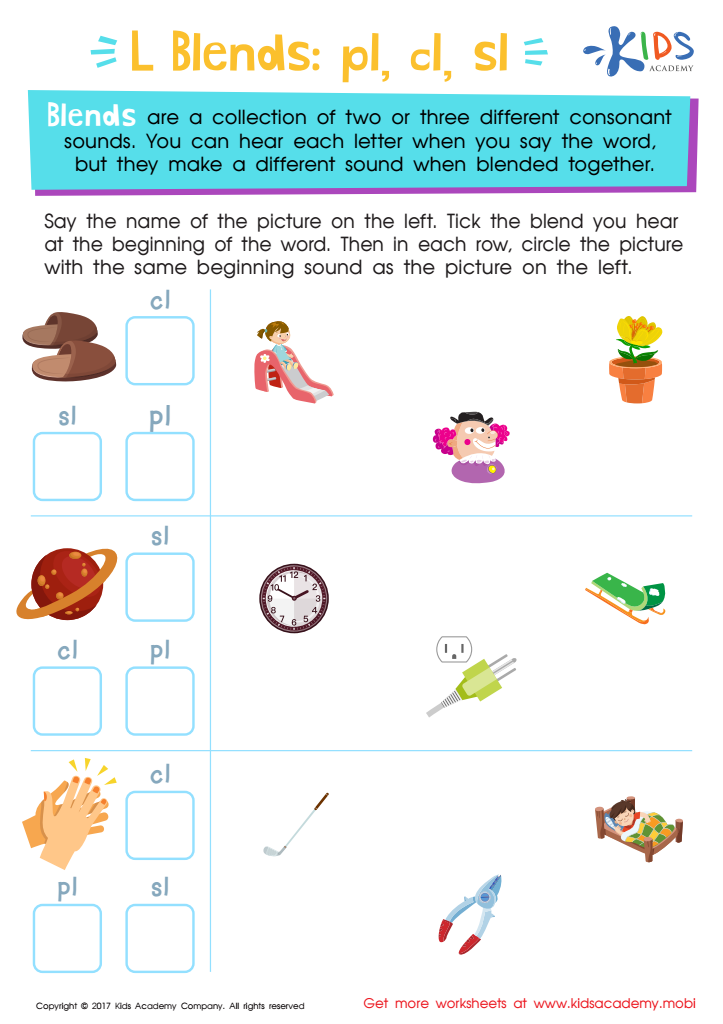

L Blends: "Pl", "Cl" and "Sl" Printable
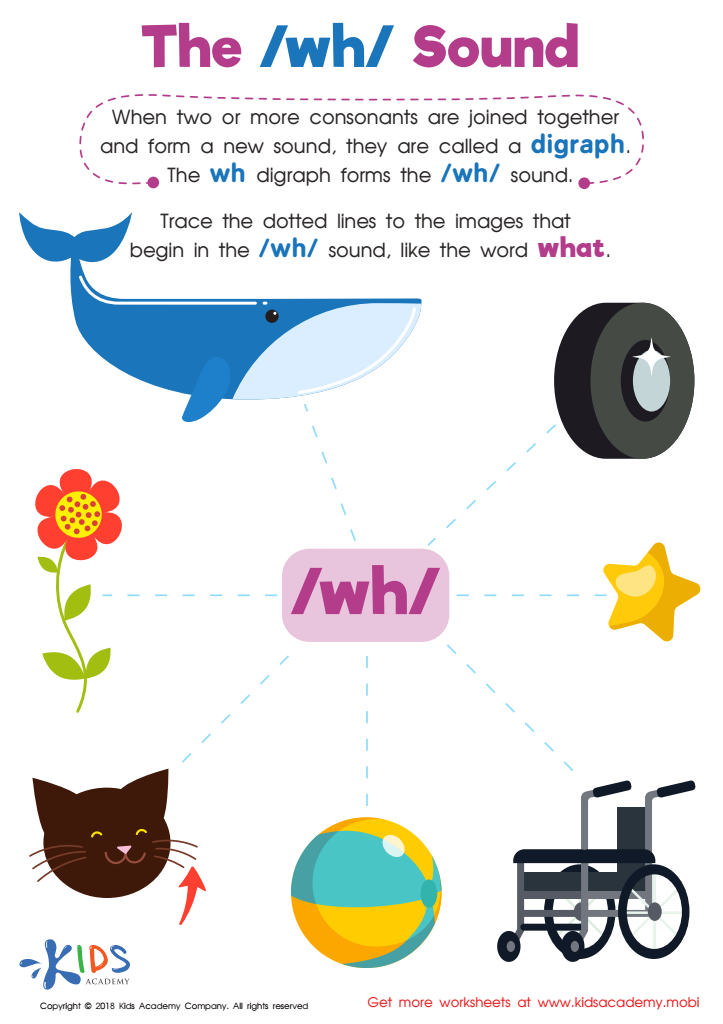

The /wh/ Sound Worksheet
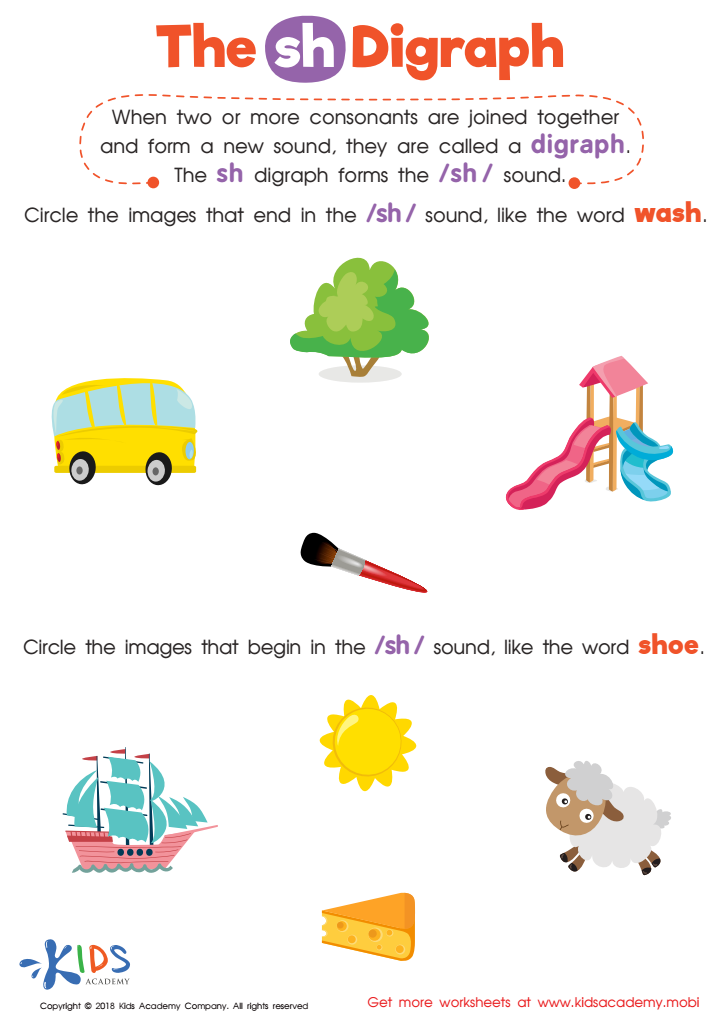

The SH Digraph Worksheet


Missing Digraph: Part 2 Worksheet
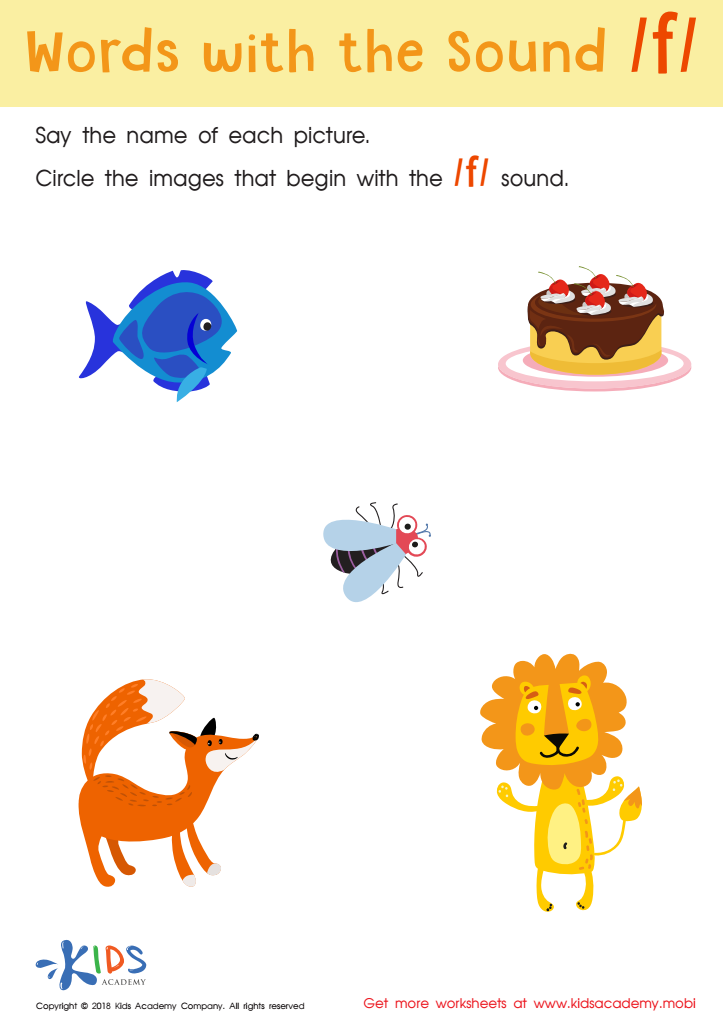

Words with sound f Reading Worksheet


Consonant Blends: "Dr" and "Tr" Printable
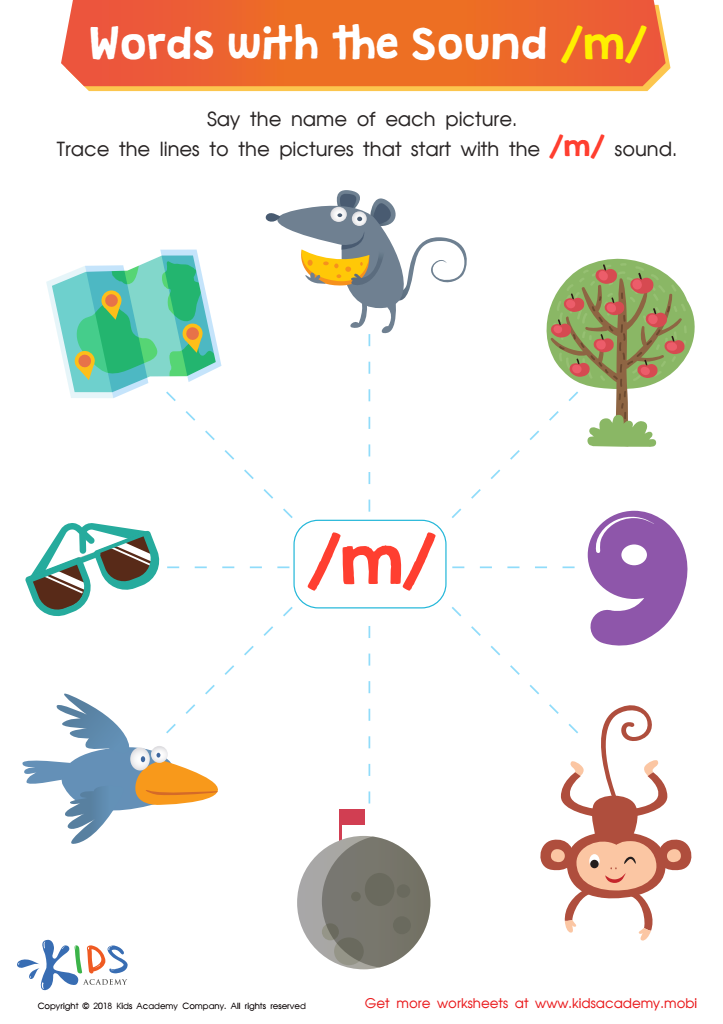

Words with Sound M Reading Worksheet
Word recognition, particularly recognizing normal consonants, is a vital skill for children aged 4-7 as it lays the foundation for literacy development. At this developmental stage, children are becoming familiar with the letters and sounds that combine to form words, making it essential for teachers and parents to prioritize this aspect.
Recognizing normal consonants helps children decode words more efficiently, making reading a less daunting task. As they learn to identify and articulate these consonants, they also enhance their phonemic awareness, which is crucial for understanding the relationship between sounds and letters. This skill is not only foundational for reading but also contributes to spelling proficiency, aiding in overall academic success.
Furthermore, effective word recognition encourages vocabulary expansion and opens up communication avenues, allowing children to express themselves more clearly. Teachers and parents who focus on this skill can promote a love for reading, boosting children's confidence and motivation. Engaging with phonics-based activities, such as games or storytelling, can make learning interactive and fun. Ultimately, the ability to recognize normal consonants is a stepping stone towards fluently reading and comprehending texts, shaping children into capable and confident learners in their early education years.

 Assign to My Students
Assign to My Students














